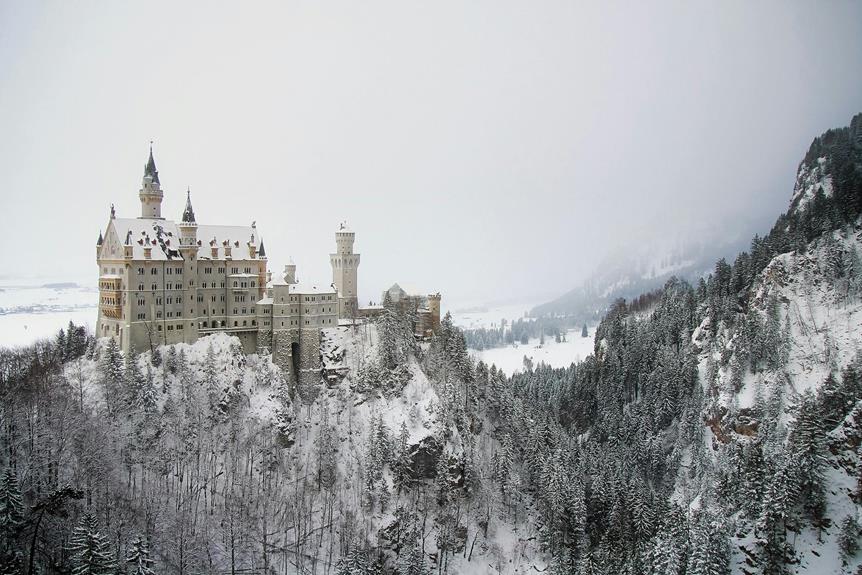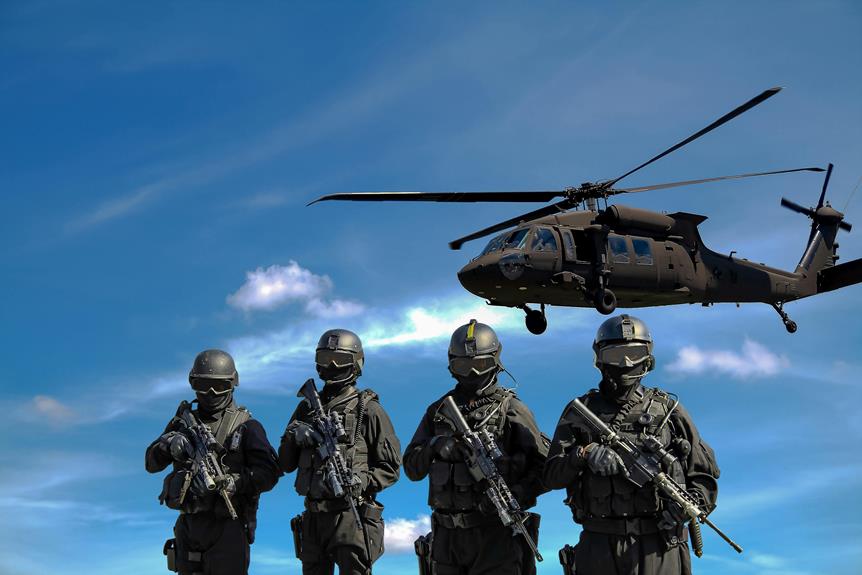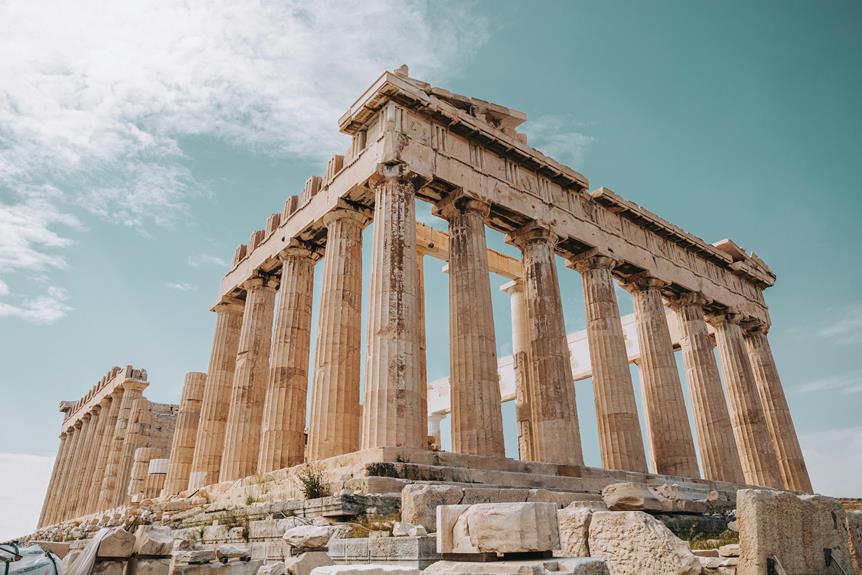Steeped in historical significance, Stalingrad, now known as Volgograd, serves as a poignant reminder of the brutal Battle of Stalingrad that unfolded on its grounds during World War II. The clash between German and Soviet forces in this city along the Volga River was nothing short of epic, shaping the course of the war. As the echoes of the past reverberate through its streets, Volgograd beckons visitors to explore its rich tapestry of landmarks, monuments, and cultural treasures, offering a glimpse into the resilience and spirit of those who once stood on its soil.
Key Takeaways
- Stalingrad (Volgograd) was a key location along the Volga River in World War II.
- The Battle of Stalingrad from 1942-1943 was a turning point against German forces.
- Landmarks like Mamayev Kurgan and The Motherland Calls statue honor the battle.
- Volgograd boasts cultural festivals, diverse cuisine, and historical museums.
- Modern Volgograd offers urban life, sustainable development, and hospitality for tourists.
Historical Background of Stalingrad
Situated along the western bank of the Volga River in southern Russia, Stalingrad, now known as Volgograd, holds a significant place in history due to its pivotal role during World War II. The Battle of Stalingrad, lasting from August 23, 1942, to February 2, 1943, was a turning point in the war and is considered one of the most impactful battles in military history. The city's location made it a strategic target for both the Axis and Soviet forces due to its position as a major industrial hub and transportation center.
Wartime strategy played an essential role in the Battle of Stalingrad. The German forces, under the command of General Friedrich Paulus, aimed to capture the city to cut off Soviet supply lines and weaken their enemy's morale. On the other hand, the Soviet forces, led by General Vasily Chuikov, utilized a defensive strategy that relied heavily on urban warfare tactics and the city's geographical features to their advantage. The brutal street fighting and close-quarter combat in Stalingrad favored the defenders, ultimately leading to the encirclement and surrender of the German Sixth Army.
The Battle of Stalingrad exemplified the importance of strategic planning, resilience, and adaptability in warfare. The lessons learned from this historic battle continue to influence military tactics and operations to this day, emphasizing the critical role of effective wartime strategy in determining the outcome of conflicts.
Significance of the Battle
The Battle of Stalingrad stands as a definitive example of strategic warfare that altered the course of World War II. Fought between August 23, 1942, and February 2, 1943, it was a turning point that marked the beginning of the Soviet Union's counter-offensive against the German forces, ultimately leading to the downfall of Nazi Germany. The impact of the Battle of Stalingrad reverberated far beyond the city itself, shaping the outcome of the entire war.
One of the key factors contributing to the significance of the Battle of Stalingrad was the strategic strategies employed by both the Soviet and German forces. The Soviet Union, under the leadership of General Zhukov, utilized innovative tactics such as encirclement and attrition to wear down the German Sixth Army. On the other hand, the German forces, led by Field Marshal von Paulus, faced severe logistical challenges and underestimated the determination of the Soviet defenders. The brutal urban warfare and the harsh winter conditions further complicated the situation for both sides.
The battle's impact extended beyond military tactics, influencing future warfare strategies and emphasizing the importance of logistical planning and adaptability. Stalingrad became a symbol of resilience and sacrifice, immortalizing the bravery of the soldiers who fought there. The lessons learned from this brutal confrontation continue to shape military thinking and strategic planning to this day.
Landmarks and Memorials in Volgograd
Landmarks and memorials in Volgograd serve as poignant reminders of the enduring legacy left by the Battle of Stalingrad, encapsulating the city's historical significance and honoring the sacrifices made during this pivotal moment in World War II. Among the most renowned Stalingrad landmarks is Mamayev Kurgan, a hill that witnessed intense fighting and now houses the towering statue 'The Motherland Calls,' symbolizing resilience and victory. Another notable memorial is the Panorama Museum, offering a 360-degree painting depicting the battle scenes with remarkable detail.
The city's architectural wonders like Pavlov's House, the Grain Silo, and the Railway Station stand as acknowledgments to the fierce battles that once raged within the city's streets. Volgograd's memorials not only honor the fallen but also provide insight into the brutal realities faced by soldiers and civilians during the war.
In addition to its historical sites, Volgograd presents a vibrant cultural scene. Visitors can explore local cuisine, including hearty dishes like borsch and pelmeni, or admire traditional crafts at the city's markets. Throughout the year, Volgograd hosts festivals celebrating its rich heritage, offering a glimpse into the city's past and present intertwining. As a living tribute to the courage and sacrifice witnessed during the Battle of Stalingrad, the landmarks and memorials in Volgograd remain essential reminders of the city's enduring spirit.
Cultural Heritage and Attractions
With a rich tapestry of historical significance and cultural diversity, Volgograd's cultural heritage and attractions offer visitors a profound glimpse into the city's vibrant past and present. Cultural festivals play a significant role in showcasing Volgograd's traditions and artistic expressions. The city hosts various festivals throughout the year, celebrating music, dance, theater, and visual arts, providing locals and tourists alike with opportunities to immerse themselves in the vibrant cultural scene.
Volgograd's traditional cuisine is another highlight for visitors. The city's culinary heritage reflects a blend of Russian, European, and Central Asian influences, resulting in a diverse and flavorful gastronomic experience. Traditional dishes like borscht, pelmeni, and shashlik can be savored in local restaurants, offering a taste of authentic Volgograd flavors.
In addition to festivals and cuisine, Volgograd boasts a range of cultural attractions that showcase its rich history. Museums such as the Volgograd State Panoramic Museum 'The Battle of Stalingrad' and the Volgograd Historical Museum provide insights into the city's past, particularly its pivotal role in World War II. Architectural gems like the Central Embankment, Volga-Don Canal, and the Mamayev Kurgan memorial complex also stand as acknowledgments to Volgograd's cultural heritage and historical significance. Visitors to Volgograd are sure to be captivated by the city's cultural offerings, which blend tradition, history, and artistic expression in a unique and compelling way.
Modern-day Volgograd: Life and Tourism
An exploration into the contemporary facets of Volgograd reveals a vital interplay between urban life and burgeoning tourism trends. The city's modern landscape is characterized by a blend of rich local cuisine and warm hospitality, offering visitors a taste of authentic Russian flavors and a welcoming atmosphere. Volgograd's culinary scene boasts traditional dishes like borscht, pelmeni, and blini, showcasing the region's unique gastronomic heritage.
In recent years, Volgograd has witnessed significant urban development aimed at enhancing sustainability and livability. The city has prioritized green spaces, eco-friendly initiatives, and efficient public transportation systems to create a more environmentally conscious urban environment. This focus on sustainability not only benefits the local population but also attracts eco-conscious tourists looking to explore a city that values responsible growth.
Hospitality plays a vital role in shaping Volgograd's tourism sector, with accommodations ranging from luxurious hotels to cozy guesthouses, ensuring a comfortable stay for visitors. The warmth and friendliness of the locals further enhance the overall experience, creating a welcoming atmosphere that encourages travelers to immerse themselves in the city's vibrant culture.
Frequently Asked Questions
What Is the Best Time of Year to Visit Volgograd?
The best time to visit Volgograd depends on your preferences. For ideal weather conditions and to explore tourist attractions comfortably, consider visiting during the summer months of June to August. This period offers pleasant temperatures for outdoor activities.
However, if you are interested in experiencing cultural events and local festivals, plan your trip around the Victory Day celebrations on May 9th when the city comes alive with commemorations and festivities.
Are There Any Underground Tunnels or Bunkers to Explore?
Exploring tunnels and bunker adventures can be an exhilarating experience for history enthusiasts and adventure seekers alike. These underground structures offer a glimpse into a hidden world, filled with historical significance and architectural marvels.
One example of such an exploration could involve traversing through a network of tunnels once used for strategic military purposes, providing a unique perspective on the challenges faced by those who operated within them.
Can Visitors Still See Remnants of the Battle in the City?
Visitors can still witness remnants of the battle in the city through various battlefield relics and war memorials. These historical artifacts serve as poignant reminders of the conflicts that once transpired, offering a glimpse into the past for those who seek to understand the city's wartime experiences.
The presence of these tangible traces not only educates visitors but also honors the sacrifices made during times of war, preserving the memory of those who fought bravely.
Are There Any Haunted Sites or Ghost Stories in Volgograd?
In the domain of urban legends and mysterious sightings, tales of paranormal encounters and supernatural happenings often captivate the curious mind.
These stories, steeped in folklore and passed down through generations, create a tapestry of haunted sites and ghostly encounters that linger in the collective consciousness.
Exploring these narratives provides a glimpse into the enigmatic world where reality blurs with the unknown, leaving a trail of whispered tales and inexplicable phenomena to ponder.
What Local Cuisine or Dishes Are a Must-Try in Volgograd?
When exploring a new destination, immersing oneself in traditional recipes and culinary delights can offer a thorough exploration of the local culture.
In Volgograd, Russia, sampling must-try dishes like borscht, pelmeni, and pirozhki is essential to understanding the region's gastronomic identity.
These iconic recipes showcase the rich flavors and hearty ingredients that have been cherished by locals for generations, providing a true taste of Volgograd's culinary heritage.
Conclusion
To sum up, Volgograd stands as a battlefield of history, where the echoes of the Battle of Stalingrad still reverberate through time. Like a phoenix rising from the ashes, this city symbolizes resilience, courage, and the human spirit's triumph over adversity.
Its landmarks and memorials serve as poignant reminders of the sacrifices made during one of the most significant battles of World War II, making Volgograd a compelling destination for those seeking to immerse themselves in the past.


